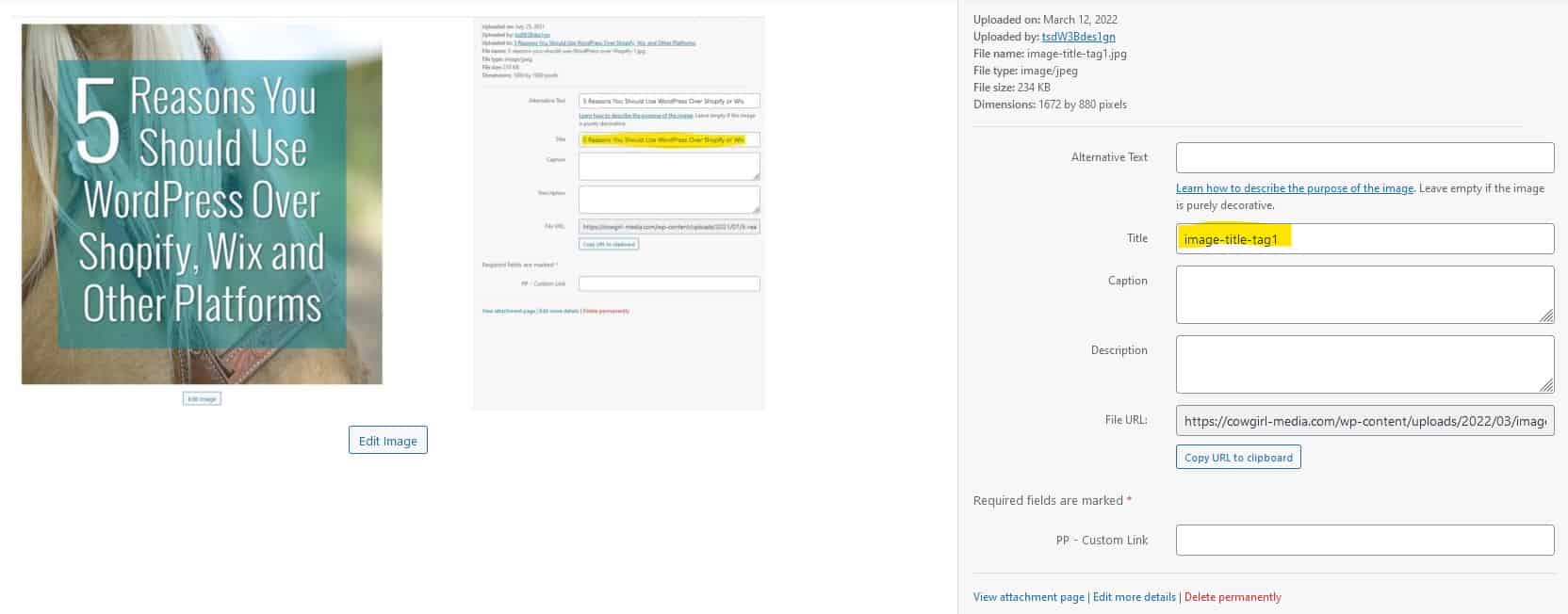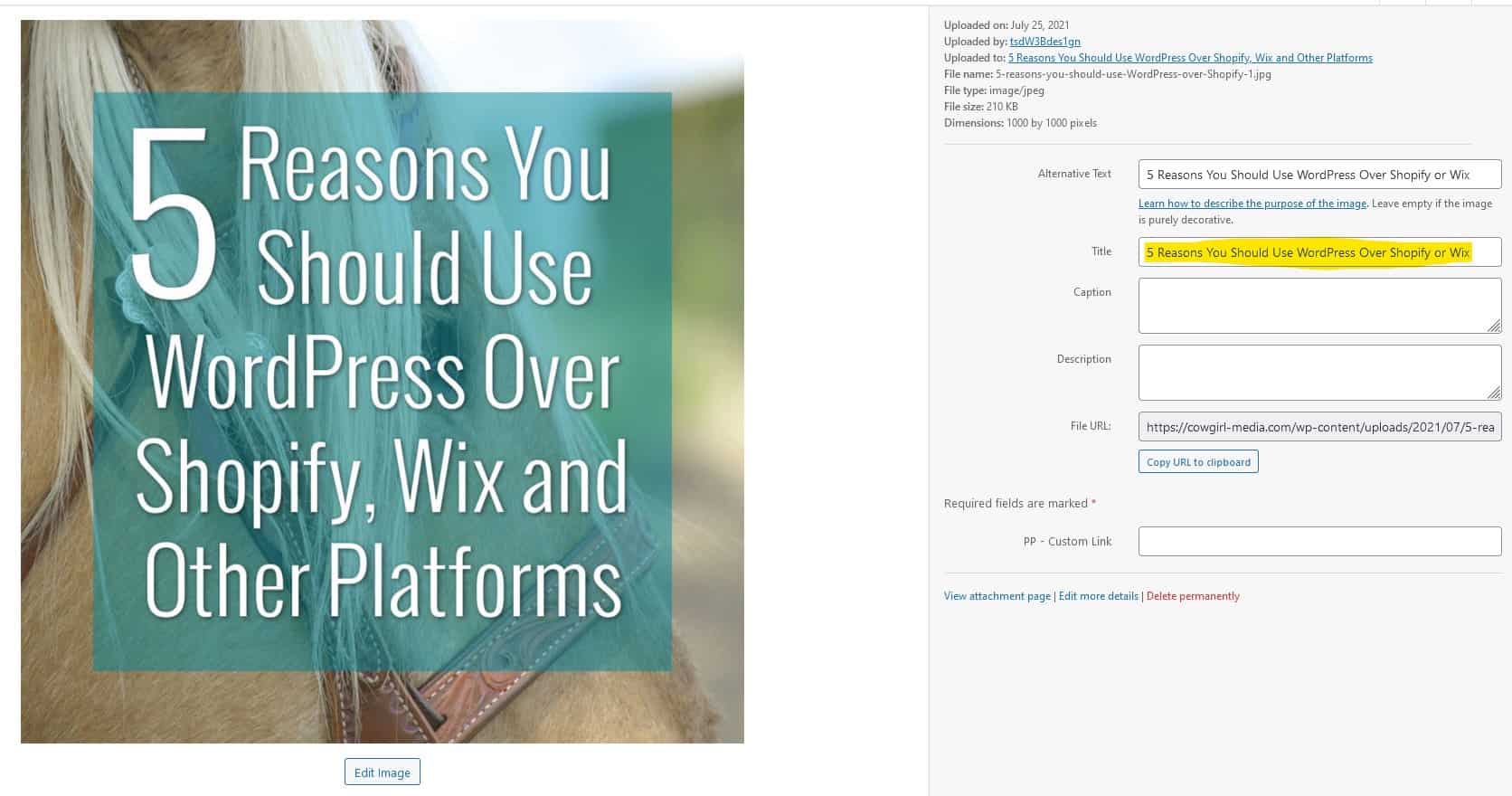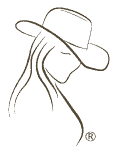UPDATED: MARCH 12, 2022
A big part of on-page SEO and more importantly, website accessibility, is utilizing ALT & Title attributes for all of the images on your site. Search engines cannot crawl images, but they can – and will – crawl & index the ALT and Title tags associated with the images on your site, so leaving these fields empty is not taking full advantage of the free SEO options available to you.
Understand the Difference Between ALT & Title Attributes
Also referred to as tags, but technically an attribute, each of these has a distinct purpose on your web page. An ALT tag is an alternative text description for your image.
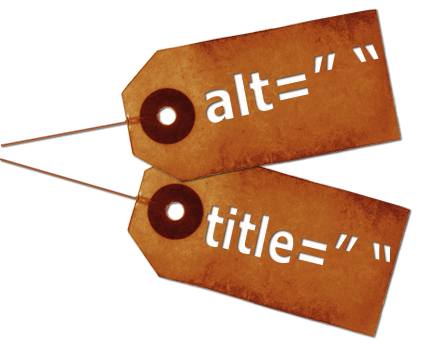
ALT text is what you see on the page, before the image loads, or if the image is missing, this ALT attribute will remain on the page visible to the viewer where the image should be. ALT text is also what vision impaired viewers will hear through their screen readers, describing what an image is about. ALT tags are considered a required element for your images, but many people leave them out at times, present company included! I’ve been guilty of it, but I always try to make the time to use them.
A Title attribute, on the other hand, is not considered required for any element, but you can use it for just about any element that you place on your page. Be sure you don’t confuse this Title attribute with your page’s actual meta title, which is written into the head content of your page.
If you hover over an image on a website, the image’s title attribute will often appear as a tool-tip pop-up, if it’s been assigned one. It used to be years ago prior to the Title attribute being widely supported by browsers, that the ALT attribute would do this. Now however, they have 2 separate purposes, so including both provides optimum leverage.
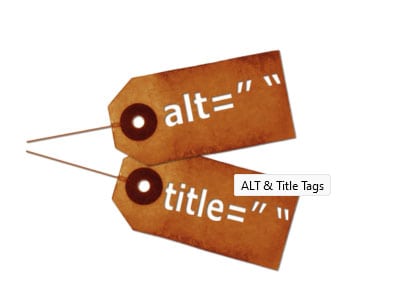
As a side note, this is another reason why it’s important to use descriptive image file names as well. When a user hovers over your image and sees a series of letters or numbers, such as IMG_4534.jpg (a proposed image file name straight out of your camera), that really isn’t helping your user or your website’s SEO! Make all your website real estate count by utilizing all the tools available to you. If you want the Title tag to appear on hover, you must edit the Title directly on the image in the WordPress Media Library.
If you are using WordPress for your site, you will have both ALT and Title fields available to you as you upload your image. You can see, as I uploaded the image below, that by default WordPress will assign the image file name as the title. This will not display on hover, thankfully. Manually changing the image title however, will show the tool tip on hover, which is more desirable for your user.
The last thing I want to mention here is to not write a paragraph in your Title and ALT tags. These attributes are not meant for complete sentences, but short, descriptive pieces of text for search engines to crawl and index.
ALT and Title attributes are a simple, FREE way to help boost your search rankings, so help the search engines help you get found online and don’t leave out this crucial part of your on page SEO.
Save

